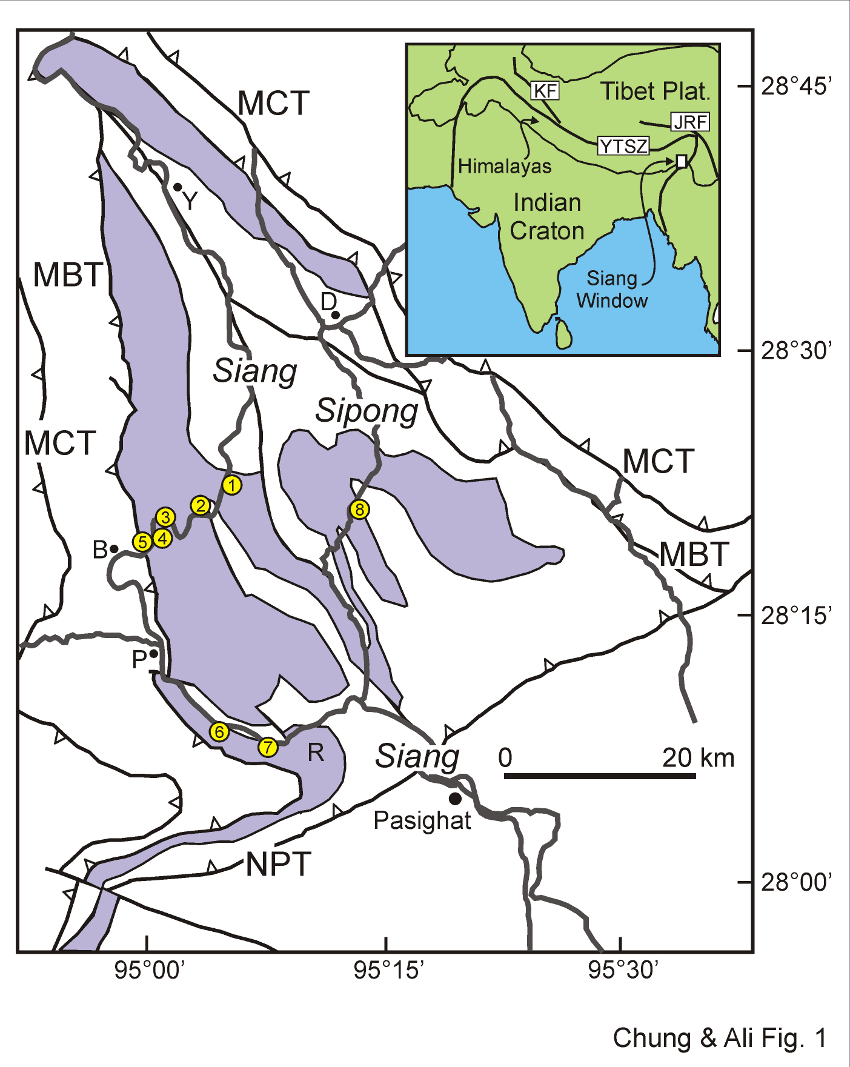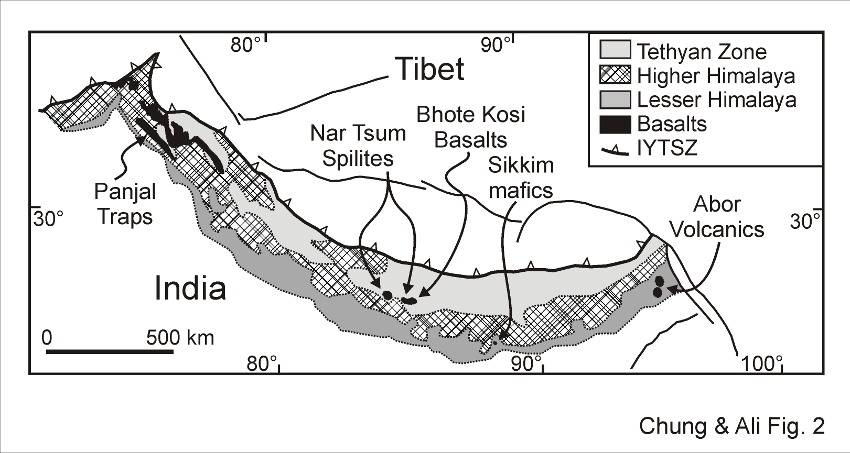Abor Volcanic Fm
Type Locality and Naming
Arunachal Pradesh, AborVolcanic Series of Coggin Brown, 1912 is first recorded from the Siang valley and were compared with the Rajmahal Trap of the Indian shield. [Original Publication: Coggin Brown, 1912. A geological reconnaissance through the Dihong Valley, being the geological results of the Abor Expedition (1911-1912). Records Geological Survey of India, v.42(4), pp.231-264.]
Lithology and Thickness
Volcanics. Volcanic rocks comprise basalt, andesite, acidic tuffs, lapillis and conglomerate. Sediment horizons are limestone, olive green phyllite/slate and shale. Its thickness is about 5-10 m.; but Chung & Ali say "up to 1500 m thick".
Relationships and Distribution
Lower contact
Conformable contact on the underlying Bhareli Fm. However, Ali et al. (2012) note that as of 2012: " However, at no stage have contact relations of any sort – stratigraphic or tectonic – been demonstrated with Abor Volcanic units"
Upper contact
Regional extent
Exposure mainly in Siang Valley "window" (ca. 27.9-28.8°N, 94.8-95.5°E) in easternmost Lesser Himalayas bound by Main Central Thrust and Main Boundary Thrust. See Chung and Ali (2012): http://www.largeigneousprovinces.org/12apr for overview.
[Figure 1: Simplified geological map of the Siang “window’’ showing the outcrop of the Abor Volcanics (shown in gray – based on Acharyya, 2007). Circled numbers, 1–8, are the exposures sampled in the paleomagnetic investigation. From Chung and Ali (2012; http://www.largeigneousprovinces.org/12apr)]
GeoJSON
Fossils
Lower Gondwana sporomorphs viz., Cyclograniporites, Suleatispora, triatopocarpites and Vittantina
Age
Depositional setting
Additional Information
Coggin Brown (1912) correlated the Abor Volcanics with the Rajmahal Trap Fm and erroneously considered them to be Jurassic in age [HOWEVER -- The Rajmahal Trap volcanics are early-Cretaceous]. Gansser (1964) equated them with the Panjal Traps Fm [now known to be of Permian age]. Jain and Thakur (1978) suggested a vague Pre-Gondwana age. Singh and Kumar (1990) see Surendra Singh (1993) suggested Upper Cretaceous to Early Eocene age. See review in Ali et al. (2012; Jour. Asian Earth Sci., 50: 105-115), whose paleomagnetic data indicate a paleolatitude of 73°S (+/- 6°) implying Early Permian. "A number of workers have proposed that the Abor Volcanics formed part of a discontinuous suite of broadly coeval basaltic provinces in Oman, NW India, Southern Tibet and Nepal following detachment of the Cimmerian block from the supercontinent. However, on the basis of stratigraphic, structural and plate modeling considerations, we suggest that the series more likely relates to the extension that was also taking place between India and its southern and eastern neighbors, Antarctica and Australia." (Ali et al., 2012, Jour. Asian Earth Sci., 50: 105-115)
[Figure 2: Distribution of the Abor Volcanic together with several other northern Indian Permian mafic magmatic suites that are exposed in the Himalayan range (from Ali et al., 2012). Note the structural positions of each formation. From Chung and Ali (2012; http://www.largeigneousprovinces.org/12apr)]

